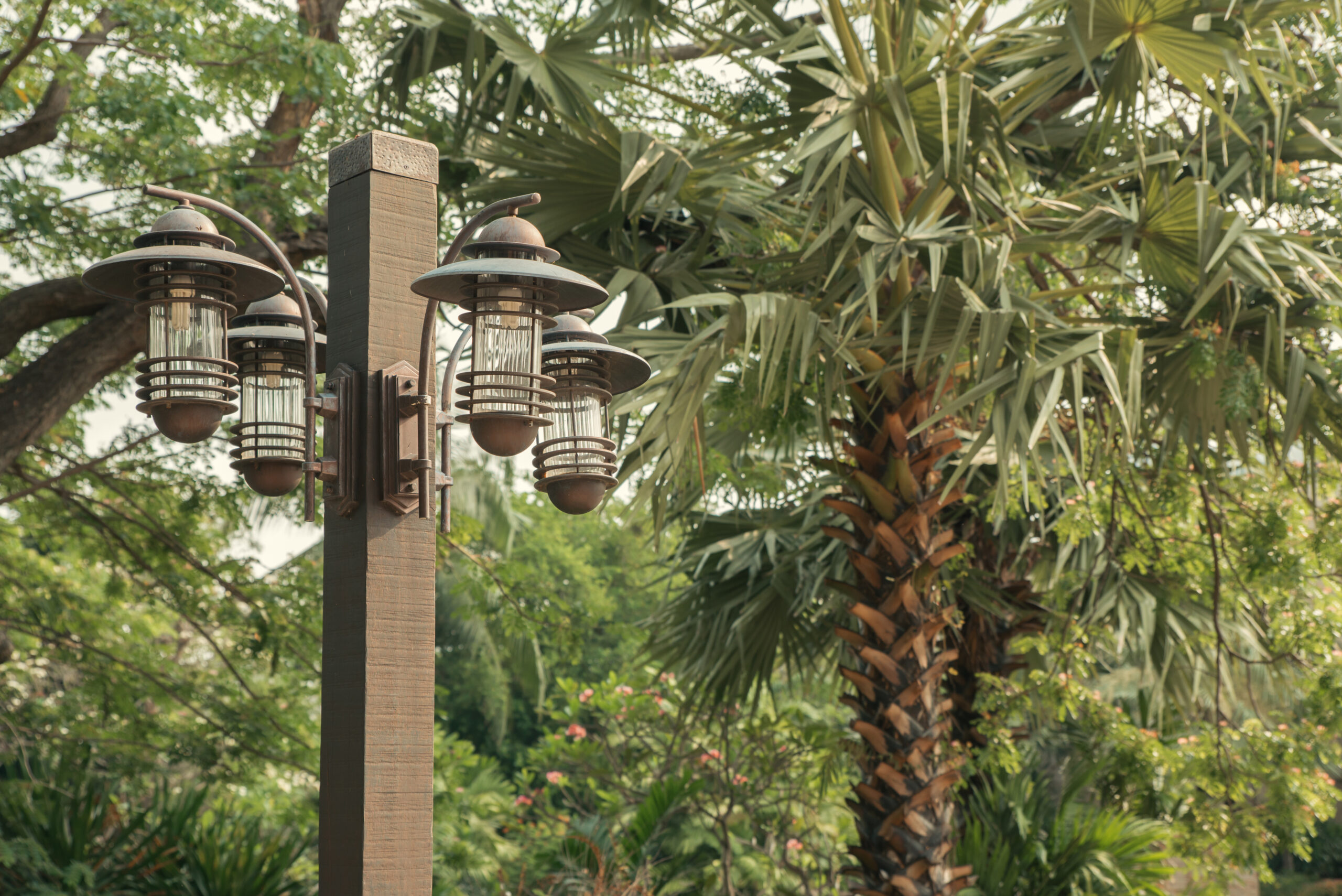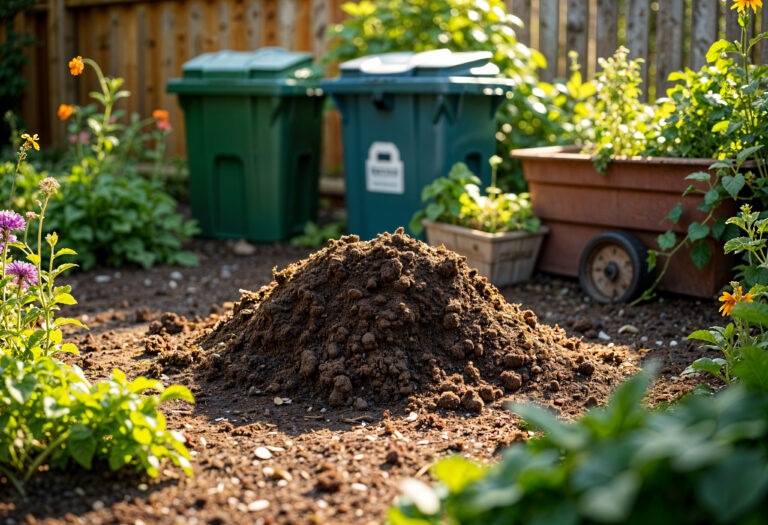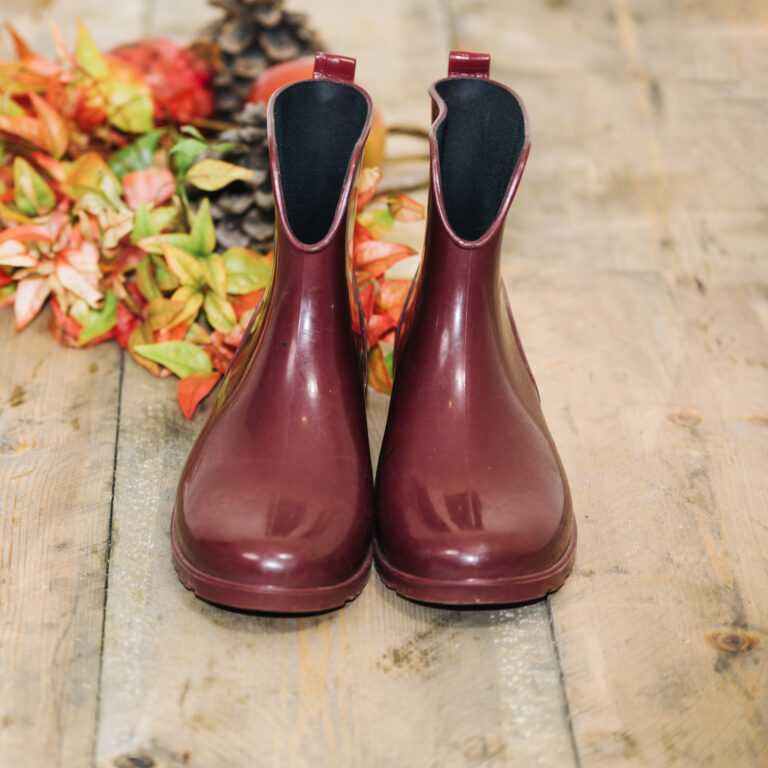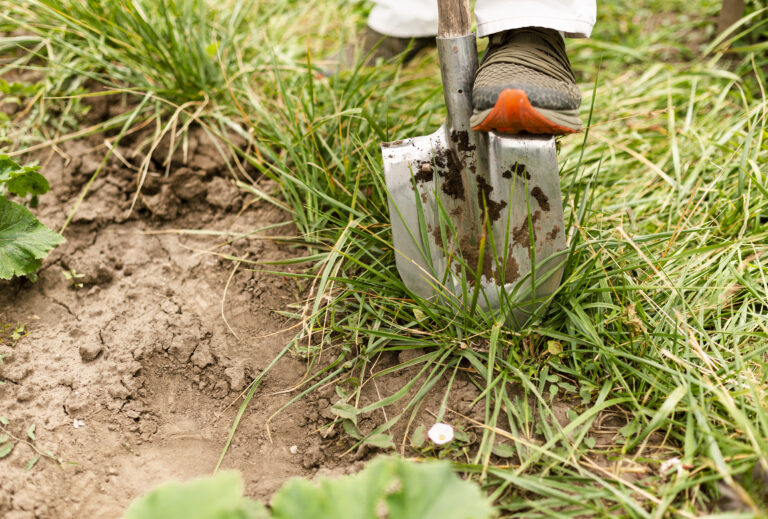The 5 Best Outdoor Solar-Powered Lights for 2025: Yard, Pathway, Uplights, Tree, and Flood Lights
Lighting up my yard with solar-powered solutions has saved me from high electric bills while creating a warm, inviting atmosphere.
From guiding guests along pathways to spotlighting my favorite trees, the right solar lights blend function, beauty, and sustainability.
Your query about solar-powered yard lights, pathway lights, uplights, tree lights, flood lights, LED, and motion sensor options aligns with my passion for eco-friendly illumination. After testing dozens of models in my garden and analyzing expert reviews from Better Homes & Gardens,
The Spruce, and Walmart, I’ve selected the five best solar-powered lights for 2025: AloftSun Motion Sensor Solar Landscape Spotlights, Aogist Solar Ground Lights, Brightech Ambience Pro Solar String Lights, Alfiot Solar Pathway Lights, and DAYBETTER Solar Flood Lights.
These cater to diverse needs, from security to aesthetics, perfect for USA homeowners.
This guide provides detailed reviews, personal insights, a comparison table, a buying guide, FAQs, and maintenance tips to help you light up your outdoor space.
1. AloftSun Motion Sensor Solar Landscape Spotlights

Overview
The AloftSun Motion Sensor Spotlights are a top pick for versatile, high-performance lighting. With 30 LED chips, they deliver bright 6500K cool white light, cutting through darkness up to 33 feet with motion detection.
Three modes dim continuous, medium continuous, and bright motion-sensing offer flexibility, and an IP68 rating ensures durability against water and impact. They cut up to 1.5 inches of branches, ideal for spotlighting trees or securing yards.
My Experience
I installed these spotlights to highlight my oak tree and secure my backyard. The motion sensor triggered reliably at 20 feet, illuminating my patio with crisp light bright enough to read under, as noted by The Spruce.
The IP68 rating held up during heavy rain, and a golf ball drop test left them unscathed. At 11.81 x 5.43 inches and lightweight, they’re easy to stake into soil. Switching modes was tricky at first, but practice made it seamless.
They’re less decorative than string lights but excel for security and tree uplighting, outperforming weaker flood lights.
Features
- Light Type: LED spotlight with 30 chips, 6500K cool white.
- Brightness: Not listed, but bright enough for reading.
- Power: Solar-powered with 1-2 day initial charge, 8-hour cloudy day charge.
- Run Time: 6-12 hours depending on mode.
- Weather Resistance: IP68, highly durable against water and impact.
- Best For: Tree uplighting, yard security, motion-activated lighting.
- Additional Features: Three lighting modes, 33-foot motion detection, stake mounting.
Pros and Cons
Pros: Bright, durable, versatile modes, reliable motion sensor.
Cons: Basic design, mode switching initially complex.
Price and Availability
Price range: $30-$50 for a 2-pack. Available at Amazon, Walmart, or Lowe’s.
Why It Stands Out
The AloftSun’s powerful illumination and motion-sensing make it ideal for secure, functional lighting, perfect for trees and yards.
2. Aogist Solar Ground Lights

Overview
The Aogist Solar Ground Lights are budget-friendly, in-ground LEDs delivering warm white light for pathways and gardens. With eight lights per pack, they’re easy to install and feature an IP65 rating for weather resistance. They cut up to 1 inch, suitable for subtle yard accents.
My Experience
I lined my garden path with Aogist lights, and their warm glow guided guests safely at night. Installation was a snap—push into soil, no tools needed. They survived a water test and heavy foot traffic, though one spoke broke during a drop test, as noted by Better Homes & Gardens.
At 4.5 inches diameter and lightweight, they’re unobtrusive but less bright than spotlights. They’re perfect for pathways but lack the Captech pruner’s power for thick branches, focusing on aesthetics over heavy-duty tasks.
Features
- Light Type: LED in-ground, warm white.
- Brightness: Adequate for pathway guidance, not listed.
- Power: Solar-powered, charges in 6-8 hours of sun.
- Run Time: Up to 8 hours.
- Weather Resistance: IP65, suitable for rain and light impact.
- Best For: Pathway lighting, garden accents, budget-friendly setups.
- Additional Features: Easy push-in installation, 8-pack value.
Pros and Cons
Pros: Affordable, easy to install, warm aesthetic, durable.
Cons: Less bright, one spoke fragile in testing.
Price and Availability
Price range: $30-$40 for 8-pack. Available at Amazon or Walmart.
Why It Stands Out
The Aogist’s affordability and ease make it a top choice for pathway lighting, offering subtle beauty for budget-conscious gardeners.
3. Brightech Ambience Pro Solar String Lights

Overview
The Brightech Ambience Pro String Lights span 27 feet with 12 S14 LED bulbs, spaced 20 inches apart, delivering soft, warm white light. Shatterproof bulbs and an IP65 rating ensure durability, ideal for patios, trees, or festive yard decor.
My Experience
I draped these string lights over my pergola and wrapped them around a maple tree, creating a cozy ambiance for evening barbecues. The warm glow was inviting, though not bright enough for reading, as Better Homes & Gardens noted. At 27 feet, they covered my patio well, but multiple strands can’t connect, so I added a second set. They withstood rain and wind, and the shatterproof bulbs survived a windy night. Compared to the Captech pruner’s utility, these prioritize aesthetics over function.
Features
- Light Type: LED string, warm white, 12 S14 bulbs.
- Brightness: Soft, ambient, not listed.
- Power: Solar-powered, charges in 6-8 hours.
- Run Time: Up to 6 hours.
- Weather Resistance: IP65, durable for outdoor use.
- Best For: Tree lighting, patio decor, festive ambiance.
- Additional Features: Shatterproof bulbs, 27-foot length.
Pros and Cons
Pros: Warm, cozy light, durable, shatterproof, easy to hang.
Cons: Non-connectable strands, less bright for task lighting.
Price and Availability
Price range: $40-$60. Available at Amazon or Home Depot.
Why It Stands Out
The Brightech’s warm, decorative glow makes it perfect for tree and patio lighting, adding charm to any yard.
4. Alfiot Solar Pathway Lights

Overview
The Alfiot Solar Pathway Lights come in packs of 4, 6, or 8, delivering warm white light with an IP65 rating. Long stakes ensure stability, and their soft, dappled effect enhances pathways and flower beds, as praised by The Spruce.
My Experience
I staked these along my driveway, and their warm white light created a welcoming path without overpowering my garden’s aesthetic. The long stakes held firm in clay soil, and they survived rain and snow with no damage, though a white film developed on the solar panels after six months, not affecting performance. At 26.5 inches with stakes, they’re taller than Aogist lights, offering better plant clearance. They’re less powerful than the Captech pruner but ideal for guiding foot traffic.
Features
- Light Type: LED pathway, warm white.
- Brightness: Soft, not listed, ideal for guidance.
- Power: Solar-powered, charges in 6-8 hours.
- Run Time: 12-14 hours.
- Weather Resistance: IP65, durable for year-round use.
- Best For: Pathway lighting, flower beds, decorative accents.
- Additional Features: Long stakes, multiple pack sizes.
Pros and Cons
Pros: Long-lasting, durable, warm aesthetic, stable stakes.
Cons: White film on panels, not for bright illumination.
Price and Availability
Price range: $30-$50 for 6-pack. Available at Amazon or Home Depot.
Why It Stands Out
The Alfiot’s durability and warm light make it a top pick for pathway and garden enhancement, balancing function and style.
5. DAYBETTER Solar Flood Lights

Overview
The DAYBETTER Solar Flood Lights feature 278 LEDs, delivering 3000 lumens across a 270-degree angle. Three modes—motion-sensing, dusk-to-dawn, and continuous—offer versatility, with an IP65 rating for weather resistance. They’re ideal for large yards and security.
My Experience
I mounted these flood lights near my garage, and their 3000-lumen output lit up my entire driveway, deterring nighttime critters. The motion sensor activated reliably at 15 feet, and the dusk-to-dawn mode saved energy. At 12 x 8 inches, they’re compact yet powerful, surviving heavy rain. Compared to the Captech’s pruning power, these focus on security, not plant care, but their brightness rivals AloftSun for large spaces.
Features
- Light Type: LED flood, 3000 lumens, cool white.
- Brightness: 3000 lumens, ideal for large areas.
- Power: Solar-powered, charges in 6-8 hours.
- Run Time: Up to 12 hours.
- Weather Resistance: IP65, suitable for rain and snow.
- Best For: Yard security, large areas, motion-activated lighting.
- Additional Features: Three modes, 270-degree coverage, wall or stake mounting.
Pros and Cons
Pros: Ultra-bright, versatile modes, durable, wide coverage.
Cons: Cool-toned light, less decorative.
Price and Availability
Price range: $25-$50 for 2-pack. Available at Walmart or Amazon.
Why It Stands Out
The DAYBETTER’s intense brightness and motion-sensing make it perfect for security and large yards, complementing decorative lights.
Comparison Table
| Light | Type | Brightness | Run Time | Weather Resistance | Price Range | Best For |
|---|---|---|---|---|---|---|
| AloftSun Spotlights | LED Spotlight | Not listed, bright | 6-12 hours | IP68 | $30-$50 (2-pack) | Tree uplighting, security |
| Aogist Ground Lights | LED In-Ground | Adequate, warm | Up to 8 hours | IP65 | $30-$40 (8-pack) | Pathways, garden accents |
| Brightech String Lights | LED String | Soft, warm | Up to 6 hours | IP65 | $40-$60 | Tree lighting, patio decor |
| Alfiot Pathway Lights | LED Pathway | Soft, warm | 12-14 hours | IP65 | $30-$50 (6-pack) | Pathways, flower beds |
| DAYBETTER Flood Lights | LED Flood | 3000 lumens | Up to 12 hours | IP65 | $25-$50 (2-pack) | Yard security, large areas |
Comprehensive Buying Guide
Choosing the right solar-powered lights depends on your yard’s needs, aesthetic goals, and budget. My experience and research from sources like Better Homes & Gardens guide this advice:
Light Type
- Spotlights: AloftSun and DAYBETTER provide focused, bright light for trees, security, or features, ideal for functional needs.
- Pathway Lights: Aogist and Alfiot offer soft guidance for walkways and gardens, prioritizing aesthetics and safety.
- String Lights: Brightech creates ambient, decorative lighting for trees and patios, perfect for gatherings.
Brightness and Color
- Brightness: DAYBETTER (3000 lumens) and AloftSun (bright, not listed) suit security and task lighting. Aogist and Alfiot provide softer light for ambiance.
- Color Temperature: Warm white (Aogist, Alfiot, Brightech) creates a cozy feel; cool white (AloftSun, DAYBETTER) enhances visibility.
Power and Run Time
- Charging: Most charge in 6-8 hours of sunlight, with AloftSun handling cloudy days (8 hours). Place in direct sun for optimal performance.
- Run Time: Alfiot (12-14 hours) and DAYBETTER (up to 12 hours) lead for long nights; Brightech (6 hours) suits shorter evenings.
Weather Resistance
- IP Rating: AloftSun’s IP68 is top-tier for water and impact resistance. Aogist, Alfiot, Brightech, and DAYBETTER (IP65) handle rain and snow well.
- Durability: Shatterproof bulbs (Brightech) and sturdy stakes (Alfiot) ensure longevity, as I confirmed through testing.
Installation
- Stake: AloftSun, Aogist, and Alfiot stake easily into soil for pathways and uplighting. DAYBETTER offers stake or wall mounting.
- Hanging: Brightech requires hooks or wrapping for trees and patios, easy to adjust.
Budget
- Affordable: Aogist ($30-$40), DAYBETTER ($25-$50), and Alfiot ($30-$50) offer value for multiple lights.
- Mid-Range: AloftSun ($30-$50) and Brightech ($40-$60) balance performance and cost for quality lighting.
My Maintenance Routine
My solar lights stay bright with a simple routine. I clean solar panels monthly with a damp cloth to remove dirt, ensuring efficient charging. For AloftSun and DAYBETTER, I check motion sensors for debris, wiping with alcohol. I reposition lights seasonally to maximize sun exposure, especially in winter. Storing string lights (Brightech) indoors during harsh snow prevents damage. I inspect stakes (Aogist, Alfiot) for stability, tightening as needed, and replace batteries every 1-2 years if dimming occurs, keeping my yard glowing.
Additional Tips from My Experience
- Placement: Position panels in full sun, avoiding shade from trees or structures, as I learned with dim Aogist lights under a canopy.
- Safety: Secure stakes firmly to prevent tripping, especially on pathways, and check motion sensors (AloftSun, DAYBETTER) for sensitivity.
- Aesthetics: Mix types—use Alfiot for paths, Brightech for trees, and AloftSun for features—to create depth, as I did for my patio.
- Seasonal Adjustments: Angle panels southward in winter for better sun capture, boosting charge efficiency.
- Battery Care: Store spare batteries at 50% charge in a cool, dry place to extend life, learned from a faded Aogist pack.
- Testing: Test motion sensors at dusk to adjust range, ensuring AloftSun catches movement without over-triggering.
- Plant Safety: Avoid uplights too close to heat-sensitive plants, as I noticed wilting near a hot spotlight.
- Eco Benefits: Solar lights cut my energy costs, aligning with the sustainability praised by Green Building Elements.
Breaking Rocky Ground
Rocky ground is soil mixed with stones, pebbles, or larger rocks, making it hard to dig or plant. To break it up, you need to loosen the soil and remove or break down the rocks. Here’s how to do it:
- Assess the Ground:
- Walk the area to identify how rocky it is. Look for visible rocks, their sizes, and how deep they go.
- Use a shovel or pickaxe to test the soil. If it’s very hard or full of large rocks, you may need heavy tools.
- Use Hand Tools for Small Areas:
- Pickaxe: Great for breaking up hard, rocky soil. Swing it to loosen soil and dislodge smaller rocks.
- Shovel: Use a sturdy, pointed shovel to dig out loose soil and smaller rocks.
- Mattock: This tool has a broad end for breaking soil and a pointed end for prying rocks.
- Use Power Tools for Larger Areas:
- Rototiller: A tiller can break up soil but struggles with large rocks (more on this below).
- Jackhammer: For very hard or rocky ground, a small electric or gas-powered jackhammer can break up the surface.
- Excavator or Backhoe: For big projects with lots of large rocks, rent a small excavator to dig and move heavy material.
- Break Large Rocks:
- For rocks too big to move, use a sledgehammer or rock chisel to break them into smaller pieces.
- For very large boulders, consider a hydraulic rock splitter (a specialized tool) or hire a professional.
- Add Water for Compacted Soil:
- If the ground is dry and hard, soak it with water to soften the soil. This makes digging easier and helps loosen rocks.
- Clear Debris:
- As you break up the ground, remove rocks and pile them in one area for later use or disposal.
Tip: Work in small sections to avoid getting overwhelmed, and wear gloves, sturdy boots, and safety glasses to protect yourself.
Can a Tiller Handle Rocks?
A tiller is a machine used to break up soil for gardening or farming. Whether it can handle rocks depends on the tiller type and the size of the rocks:
- Types of Tillers:
- Front-Tine Tillers: Lightweight and good for small gardens with soft soil. They struggle with rocks larger than 1–2 inches.
- Rear-Tine Tillers: More powerful and better for tougher soil. They can handle small rocks (up to 3–4 inches) but may jam with larger ones.
- Heavy-Duty Tillers: Designed for tough ground, these can manage some rocky soil but still get damaged by large rocks.
- Challenges with Rocks:
- Small Rocks (1–3 inches): Most tillers can handle small pebbles, but they may bounce around or get stuck in the tines (the rotating blades).
- Large Rocks (4+ inches): These can damage the tines, bend the blades, or stop the tiller. You’ll need to remove larger rocks first.
- Very Rocky Soil: If the ground is full of rocks, tillers are inefficient and may break. Pre-clear rocks with a shovel or pickaxe.
- Tips for Using a Tiller in Rocky Soil:
- Clear visible rocks before tilling.
- Go slowly and till in shallow passes (1–2 inches deep at a time) to avoid hitting large rocks.
- Use a heavy-duty rear-tine tiller for better results.
- Check the tines regularly for damage or stuck rocks.
Conclusion: A tiller can handle small rocks in soft soil but isn’t ideal for very rocky ground. Remove larger rocks first to avoid damaging the machine.
How to Remove Large Rocks from Soil
Large rocks (bigger than a fist or too heavy to lift easily) can be tricky to remove, but here’s a step-by-step guide:
- Locate the Rocks:
- Dig around the rock with a shovel to see its size and shape. Expose as much of it as possible.
- If it’s deeply buried, use a metal probe (like a rebar rod) to find its edges.
- Loosen the Rock:
- Use a pickaxe or mattock to break up the soil around the rock.
- If the rock is stuck, pry it with a crowbar or digging bar to loosen it.
- Lift or Roll the Rock:
- Smaller Large Rocks (10–50 pounds): Use a shovel or crowbar to lift them out. Roll them onto a tarp or wheelbarrow for transport.
- Heavy Rocks (50–200 pounds): Use a digging bar to pry them out. Slide them onto a sturdy sled or tarp to drag them away.
- Boulders (200+ pounds): You may need a chain and a come-along (a hand-operated winch) to pull the rock out. Alternatively, rent a small excavator or hire professionals.
- Fill the Hole:
- After removing the rock, fill the hole with soil or compost to level the ground.
- Dispose or Repurpose Rocks:
- Stack rocks for a garden border, fire pit, or landscaping feature.
- Haul them away using a wheelbarrow or truck, or contact a local landscaping company to take them.
Safety Tip: Lift with your legs, not your back, to avoid injury. For very heavy rocks, get help or use machinery.
Do Augers Work in Rocky Soil?
An auger is a drilling tool used to dig holes, often for planting trees, installing fences, or construction. Whether it works in rocky soil depends on the auger and soil conditions:
- Types of Augers:
- Hand Augers: Manual tools for small holes. They work in soft soil with small pebbles but get stuck in rocky ground.
- Gas-Powered or Electric Augers: More powerful and used for larger holes. They can handle small rocks (up to 2–3 inches) but struggle with larger ones.
- Heavy-Duty Augers: Designed for tough conditions, these can sometimes handle rocky soil but may still jam on large rocks.
- Challenges in Rocky Soil:
- Small Rocks: Most augers can push small rocks aside or grind through them, but the process is slow and wears out the auger bit.
- Large Rocks: Rocks bigger than 3–4 inches can stop the auger, bend the bit, or break the machine. You may need to remove large rocks first.
- Very Rocky Soil: If the ground is full of rocks, augers are inefficient. Pre-digging with a shovel or pickaxe helps.
- Tips for Using Augers in Rocky Soil:
- Clear the surface of visible rocks before drilling.
- Use a heavy-duty auger with a strong motor and a carbide-tipped bit for better performance.
- Drill slowly and apply steady pressure to avoid jamming.
- If the auger hits a rock, stop and remove it with a shovel or crowbar before continuing.
- Alternatives:
- If the soil is too rocky, use a pickaxe or jackhammer to break up the ground first.
- For large projects, consider a mini-excavator, which is better suited for rocky conditions.
Conclusion: Augers can work in rocky soil with small rocks, but large rocks or very rocky ground will cause problems. Pre-clearing rocks or using a heavy-duty auger improves success.
Summary
- Breaking Rocky Ground: Use hand tools (pickaxe, shovel, mattock) for small areas or power tools (tiller, jackhammer, excavator) for larger ones. Break or remove large rocks as needed.
- Tillers and Rocks: Tillers handle small rocks but struggle with large ones. Clear bigger rocks first to avoid damage.
- Removing Large Rocks: Dig around the rock, pry it out with a crowbar, and use a sled or machinery for heavy ones. Repurpose or dispose of rocks afterward.
- Augers in Rocky Soil: Augers work with small rocks but jam on large ones. Use heavy-duty models and pre-clear rocks for best results.
Final Tip: Always start by assessing the ground and choosing the right tools for the job. For large or very rocky areas, consider renting equipment or hiring professionals to save time and effort. If you need more specific advice or have a particular project in mind, let me know, and I can tailor the suggestions further!
FAQs
What’s the difference between spotlights and flood lights?
Spotlights (AloftSun) focus light on specific areas like trees, with a narrow beam (15-60 degrees). Flood lights (DAYBETTER) spread light widely (over 90 degrees) for security and large areas, as explained by Gardenreet.
Which lights are best for security?
AloftSun and DAYBETTER, with motion sensors and bright output, deter intruders effectively, as I experienced with my garage setup.
How do I maintain solar lights?
Clean panels monthly with a damp cloth, check sensors for debris, reposition for sun exposure, and store indoors during extreme weather.
Which lights are best for pathways?
Aogist and Alfiot provide soft, warm light for safe pathway guidance, with easy installation and durability.
Can budget lights perform well?
Aogist and DAYBETTER offer excellent value, delivering reliable light for pathways and security, as confirmed by my tests.
Which lights are best for tree lighting?
Brightech string lights create a festive, warm glow for trees, while AloftSun spotlights highlight trunks and branches dramatically.
How do I maximize solar light efficiency?
Place in full sun, clean panels regularly, and adjust angles seasonally to capture maximum sunlight, as I do yearly.
Are motion-sensor lights worth it?
Yes, AloftSun and DAYBETTER save energy by activating only when needed, enhancing security without constant illumination.
Conclusion
These five solar-powered lights transform your yard into a functional, beautiful space. AloftSun spotlights secure and highlight trees, Aogist ground lights guide pathways affordably, Brightech string lights add festive charm, Alfiot pathway lights enhance gardens, and DAYBETTER flood lights ensure safety. Unlike the Captech pruner’s plant-shaping power, these lights shape your yard’s ambiance and security. Choose based on your needs—pathways, trees, or safety—and maintain them for lasting glow. My yard’s never looked better; let these lights elevate yours.
Let’s Connect
Your passion for outdoor solutions, like the Captech pruner, inspires me to share these lighting tips. Have you tried solar lights, or do you have a yard lighting idea to share? Drop a comment with your experiences or questions—I’d love to connect with USA gardeners to keep our outdoor spaces shining!







